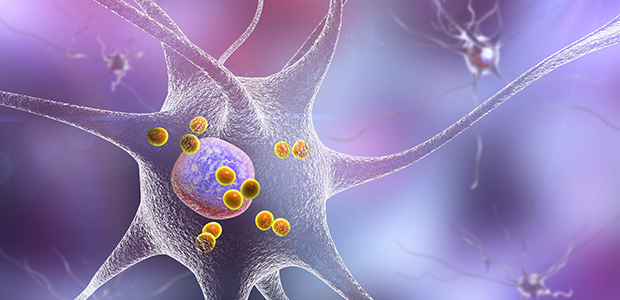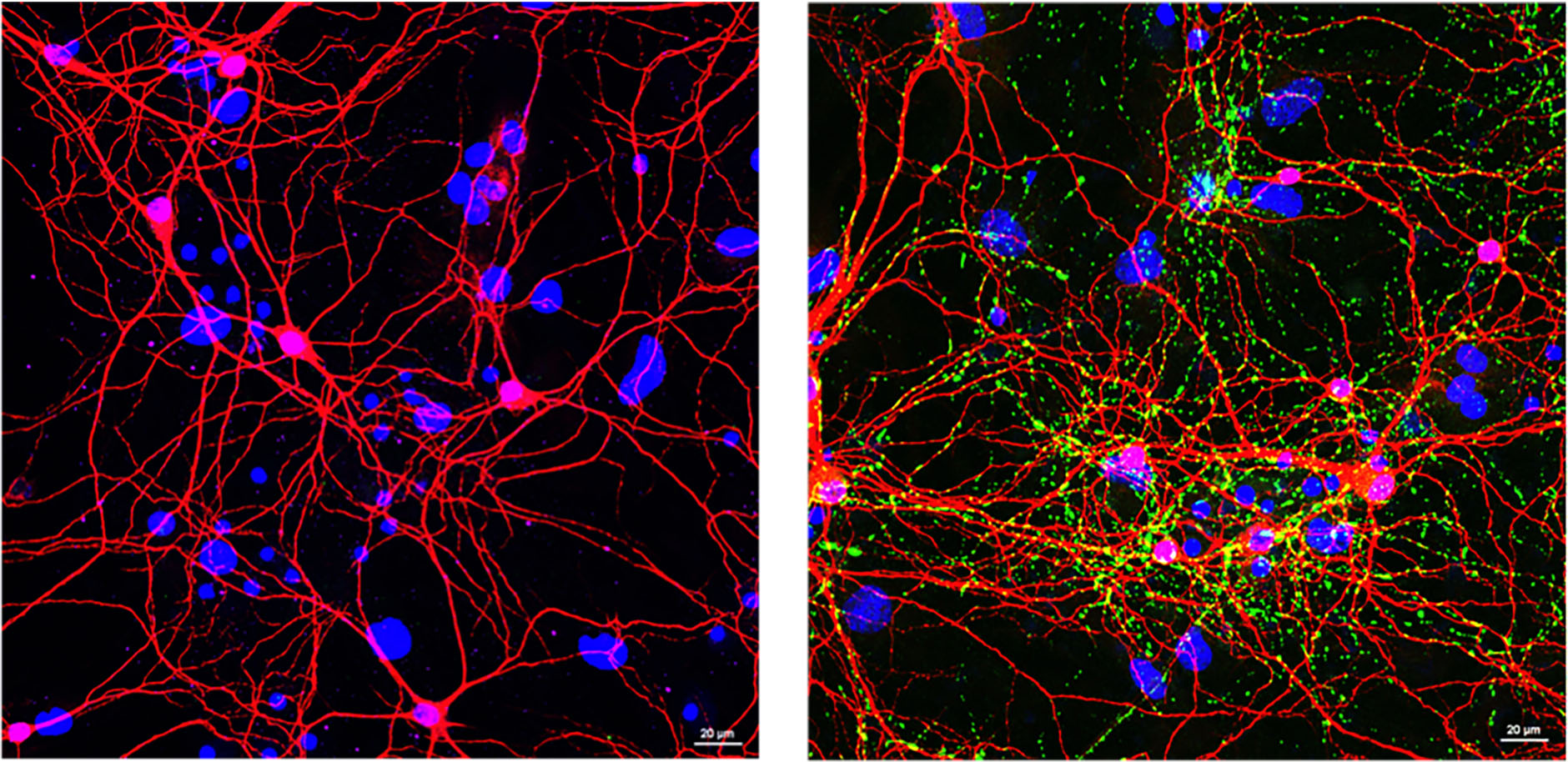TORONTO, May 11, 2020 – How is your sense of smell? Do you find yourself frequently dozing off during the day or thrashing about during dreams? Often, early stage Parkinson’s disease does not present with typical motor disturbance symptoms, making diagnosis…
Tag: Parkinson’s Disease
Parkinson’s Disease: Exploring Motives for Long-Term Adherence to a Group Exercise Program
Abstract Purpose The aim of this study was to explore why people with Parkinson’s disease maintained attendance at a community group exercise program. Design Qualitative design was used for this study. Methods A purposive sample was used to recruit participants. Interviews with individual and focus groups collected narrative data that were interpreted using content…
Lipid metabolism controls brain development
Neural stem cells are not only responsible for early brain development – they remain active for an entire lifetime. They divide and continually generate new nerve cells and enable the brain to constantly adapt to new demands. Various genetic mutations…
Lipid metabolism controls brain development
Neural stem cells are not only responsible for early brain development – they remain active for an entire lifetime. They divide and continually generate new nerve cells and enable the brain to constantly adapt to new demands. Various genetic mutations…
New trial platform could accelerate finding a cure for Parkinson’s disease
Scientists describe the concept of a multi-arm, multi-stage (MAMS) trial for evaluating potential therapies for Parkinson’s disease
New trial platform could accelerate finding a cure for Parkinson’s disease
Scientists describe the concept of a multi-arm, multi-stage (MAMS) trial for evaluating potential therapies for Parkinson’s disease
New evidence that higher caffeine and urate levels are protective against Parkinson’s
Analysis of participants in the Harvard biomarkers study highlights the inverse association between low caffeine consumption
New evidence that higher caffeine and urate levels are protective against Parkinson’s
Analysis of participants in the Harvard biomarkers study highlights the inverse association between low caffeine consumption
Different kinds of white fat are important in disease
Multiple populations of subcutaneous white fat cells each may play different roles in obesity, diabetes and other diseases.
Different kinds of white fat are important in disease
Multiple populations of subcutaneous white fat cells each may play different roles in obesity, diabetes and other diseases.
ARN Board Member Maureen Musto Selected for Development Group Working on the World Health Organization “Rehabilitation 2030” Initiative
The Association of Rehabilitation Nurses is proud to announce that ARN Board Member Maureen Musto, MS RN APRN-CNS ACNS-BC CRRN, has been selected to serve on the Development Group for Traumatic Brain Injury and Parkinson’s Disease working on development of the World Health Organization (WHO) Rehabilitation Programme’s Package of Interventions for Rehabilitation (PRI).
Parkinson’s dyskinesia mechanism explained
Involuntary movements caused by dopamine replacement therapy can be alleviated through suppression of RasGRP1, study finds
RNA chemist recognized with $11M ‘proven trackrecord’ award
Matthew Disney, PhD, develops RNA-targeting medicines for brain diseases, cancer and COVID-19
KU Leuven researchers unravel protein mystery of three brain diseases
The accumulation of one particular protein in the brain is at the basis of three very different age-related conditions. Until recently, nobody understood how this was possible. Research by the Laboratory for Neurobiology and Gene Therapy (KU Leuven) now reveals…
Computational techniques explore ‘the dark side of amyloid aggregation in the brain’
UMass Amherst scientists advance knowledge of neurodegenerative fibril formation
Light-based deep brain stimulation relieves symptoms of Parkinson’s disease
Fast-acting, light-reactive genetic tools could reveal how deep brain stimulation works
ISSCR 2020 Virtual Meeting registration open
Exceptional science; new digital experience; event is June 23-27, 2020
Parkinson’s disease may start in the gut
Researchers at Karolinska Institutet in Sweden and the University of North Carolina in the USA have mapped out the cell types behind various brain disorders. The findings are published in Nature Genetics and offer a roadmap for the development of…
High density EEG produces dynamic image of brain signal source
New functional imaging technology dynamically maps a signal’s source and underlying networks within the brain

New research gives further evidence that autoimmunity plays a role in Parkinson’s disease
A new study co-led by scientists at the La Jolla Institute for Immunology (LJI) adds increasing evidence that Parkinson’s disease is partly an autoimmune disease. In fact, the researchers report that signs of autoimmunity can appear in Parkinson’s disease patients years before their official diagnosis.
New research gives further evidence that autoimmunity plays a role in Parkinson’s disease
LJI scientists link immune cells to Parkinson’s disease onset
Novel technology aims to improve treatment of neurological diseases
Princeton researchers are developing genetic “on” switches for use in gene therapy, the practice of delivering new genes to replace or assist ones that are faulty.
Probiotic intervention in ameliorating the altered CNS functions in neurological disorders
The review article by Dr. Sandeep Kaur and Dr. Vandana Sharma is published in The Open Microbiology Journal, Volume 14, 2020
Network pharmacology analysis on Zhichan powder in the treatment of Parkinson’s disease
Parkinson’s disease (PD) is a debilitating neurodegenerative disorder which is characterized by the degradation and subsequent loss in activity of the motor nerve system in the body. The disease is incurable and patients also tend exhibit non motor function disabilities…
Probiotic intervention in ameliorating the altered CNS functions in neurological disorders
The review article by Dr. Sandeep Kaur and Dr. Vandana Sharma is published in The Open Microbiology Journal, Volume 14, 2020
Network pharmacology analysis on Zhichan powder in the treatment of Parkinson’s disease
Parkinson’s disease (PD) is a debilitating neurodegenerative disorder which is characterized by the degradation and subsequent loss in activity of the motor nerve system in the body. The disease is incurable and patients also tend exhibit non motor function disabilities…
Being right-brained or left-brained comes down to molecular switches
Findings may explain why Parkinson’s disease and other neurological disorders impact one side of the body before the other
Toxic cell atlas guides new therapies for neurodegeneration
New study generates an ‘atlas’ of toxic immune cells in the brain
Inhibition of sphingolipid metabolism and neurodegenerative diseases
Disrupting the production of a class of lipids known as sphingolipids in neurons improved symptoms of neurodegeneration and increased survival in a mouse model, according to new research led by the joint laboratory of Robert Farese, Jr. and Tobias Walther…
Belgian scientists identify ATP10B as novel risk gene for Parkinson’s disease
Screening DNA of Parkinson’s patients in the Christine Van Broeckhoven laboratory (VIB-UAntwerpen Center for Molecular Neurology) identified a new risk gene for Parkinson’s disease. Mutations in ATP10B resulted in loss of ATP10B protein. The function of the ATP10B gene was…
Optical imaging technology may help surgeons better treat cancer, brain diseases
WEST LAFAYETTE, Ind. – A new tool for medical professionals may help shed more light on tumors in the body and how the brain operates. Purdue University researchers created technology that uses optical imaging to better help surgeons map out…

Brain discovery suggests source of lifelong behavioral issues
Improper removal of faulty brain cells during neurodevelopment may cause lifelong behavioral issues, new research from the University of Virginia School of Medicine suggests. The finding also could have important implications for a wide range of neurodegenerative diseases, such as Alzheimer’s and Parkinson’s.
Potential therapy for rare neurologic disease
UC researchers discover use of targeted therapy for disease
Patients with Parkinson’s disease face unique ‘hidden sorrows’ related to the COVID-19
Experts writing in the Journal of Parkinson’s Disease discuss potentially grave consequences for Parkinson’s disease patients related to social distancing, but also opportunities like new avenues for research and initiatives that may offer positive help and support
New family of molecules to join altered receptors in neurodegenerative diseases
Imidazoline receptors I2: Looking for new therapeutic targets
Managing Negative Thoughts Helps Combat Depression in Parkinson’s Patients
People with Parkinson’s disease who engage in cognitive behavioral therapy — a form of psychotherapy that increases awareness of negative thinking and teaches coping skills — are more likely to overcome depression and anxiety, according to a Rutgers study.
Study: Therapy by Phone Is Effective for Depression in People with Parkinson’s
Depression is common in people with Parkinson’s disease and contributes to faster physical and mental decline, but it is often overlooked and undertreated.
The good news is that participating in cognitive-behavioral therapy by telephone may be effective in reducing depression symptoms for people with Parkinson’s, according to a study published in the April 1, 2020, online issue of Neurology®, the medical journal of the American Academy of Neurology.
Study: Therapy by phone is effective for depression in people with Parkinson’s
MINNEAPOLIS – Depression is common in people with Parkinson’s disease and contributes to faster physical and mental decline, but it is often overlooked and undertreated. Cognitive-behavioral therapy has shown promising results for treating depression in people with Parkinson’s, yet many…
Managing negative thoughts helps combat depression in Parkinson’s patients
Cognitive behavioral therapy can help alleviate depression and improve quality of life, Rutgers study finds
Tracking tau
Understanding how the protein tau moves between neurons yields insight into possible treatments for neurodegenerative diseases
Jumping genes help make neurons in a dish
The process of making functional brain cells in a lab dish requires the precise activation of selfish genetic elements known as LINE-1 (L1) retrotransposons. The finding, from researchers at KAUST, could lead to safer and more effective regenerative therapies for…
Researchers invent method to unlock potential of widely used drug
Sugars like polysaccharides are found everywhere in nature and are believed to be essential for life to arise. In humans, they cover the surface of all cells and the family of polysaccharides called GAGs (glycosaminoglycans) are particularly abundant and difficult…
Researchers find brain cell that triggers tremor and how to control it
Researchers at Baylor College of Medicine and the Jan and Dan Duncan Neurological Research Institute at Texas Children’s Hospital have improved our understanding of how tremor — the most common movement disorder — happens, opening the possibility of novel therapies…
‘Natural killer’ cells could halt Parkinson’s progression
Researchers at the University of Georgia’s Regenerative Bioscience Center and their colleagues have found that “natural killer” white blood cells could guard against the cascade of cellular changes that lead to Parkinson’s disease and help stop its progression. Natural killer…

‘Natural killer’ cells could halt Parkinson’s progression
Researchers at the University of Georgia’s Regenerative Bioscience Center and their colleagues have found that “natural killer” white blood cells could guard against the cascade of cellular changes that lead to Parkinson’s disease and help stop its progression.
NCAM2 protein plays a decisive role in the formation of structures for cognitive learning
An unknown function in the cortex and hippocampus
Protective brain-cell housekeeping mechanism may also regulate sleep
Penn Medicine study may point to new strategies for improving sleep and preventing neurodegenerative disease
Vision problems may be common in people with Parkinson’s disease
MINNEAPOLIS – Vision and eye problems like blurry vision, dry eyes, trouble with depth perception, and problems adjusting to rapid changes in light are much more common in people with Parkinson’s disease than in people without the disorder, according to…
Giving common muscle relaxant via nose shows potential to treat neurodegenerative diseases
Penn study shows administering dantrolene through the nose increases its brain concentration in a mouse model of Alzheimer’s disease
Examining diagnoses of stress-related disorders, risk of neurodegenerative diseases
What The Study Did: Researchers investigated how stress-related disorders (such as posttraumatic stress disorder, adjustment disorder and stress reactions) were associated with risk for neurodegenerative diseases, including Alzheimer and Parkinson disease and amyotrophic lateral sclerosis (ALS), using data from national…